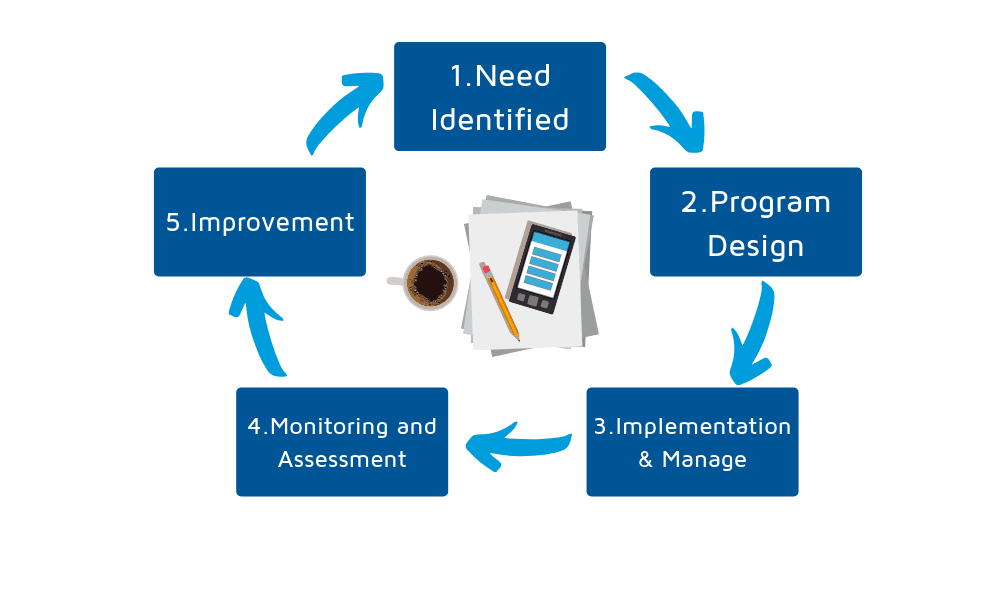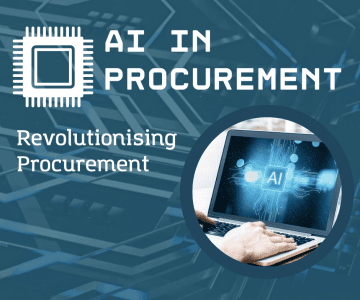Where are you in the program lifecycle?

Being asked to manage a new, or existing, program can seem overwhelming – anyone who has been involved with a program knows that a lot of work goes into its success.
Grosvenor Public Sector Advisory have developed a series of articles to break down the key activities and tasks program managers can implement to make life easier.
This first article takes you back to the beginning, unpacking the program lifecycle and what it means for you.
The Program Lifecycle
When considering program management needs and areas of focus, it can be useful to think about your program in relation to the five stages of the program lifecycle:

Programs at the beginning of their lifecycle are full of potential and possibility. They are conceptual in nature, unformed and undefined. Conversely, well-established programs have clearly defined boundaries and are operating as ‘business as usual’ with good (or bad!) practices and procedures in place.
Thinking about the differences in new, yet to be developed programs versus those that are well established, makes it easy to see that you will have different business management priorities at these different stages.
1. Need Identified
Do you suspect (or have been told) that there is a gap or problem in current services or an opportunity to realise a positive impact in your field?
This is the need identification stage – a problem or opportunity may exist which requires specific action or effort to overcome or realise. It’s a time to understand the problem / opportunity and reach a decision about whether action should be taken.
What do you need to do?
Define the problem:
- What is the scope and scale of the problem?
- How important is this? To who?
- What’s important to those affected/involved? What will drive action/inaction?
Decide whether action should be taken:
- Is this opportunity/problem within your responsibility, capability and capacity?
- If so, is this a priority for your organisation (when compared to other work you need to complete)?
Activities required to ensure you have a comprehensive understanding of the need can include stakeholder engagement as well as research, data collection and analysis. Outputs may include a clearly defined problem statement, stakeholder mapping, conceptual model and literature review.
2. Program Design
Once a decision has been made to address a defined need (identified in Stage 1) you can progress to program design. This stage focuses on determining how to best address the need within any constraints or parameters that exist.
What do you need to do?
Research and assess potential options to address the problem. You can ask questions such as:
- How has this problem has been approached in the past? In other jurisdictions/settings?
- How successful have other approaches been? Did they achieve the desired outcomes?
- What are the costs, benefits and risks of these options?
- What constraints, parameters or considerations will impact on how the program can operate, or what can be achieved in your operating environment?
- What is the best option for you?
- How will you know if your program is successful and well managed?
Identify, test and reach agreement on the best option (ensuring alignment with your program context and stakeholder needs).
At the end of this stage your program design should be clearly documented. Outputs may include, options analysis, a clearly documented program theory and a program logic model, service delivery model, risk assessment and/or high level costing.
3. Implementation and manage
After the program design is settled you are ready to commence the program and prepare for ongoing delivery. The implementation stage focuses on establishing the program and generally includes bedding down program processes so that they are efficient, effective and can become business as usual, potentially involving a pilot of delivery.
What do you need to do?
- Ensure that you have the resources, capabilities and tools you need to deliver the program, undertaking procurements and recruitment as required
- Design and document required program management tools and materials. Focusing on this early will ensure you are set up for success once the program commences
- Set up internal processes, procedures and governance structures to support ongoing delivery and management
- Pilot and refine the program.
To ensure clarity and transparency, it is important that all information relevant to program implementation and delivery is documented. Outputs from this stage may include governance models, program delivery manuals or guidelines, a monitoring and evaluation framework and capability matrix.
4. Monitoring and Assessment
Once the program is operational it’s important to regularly reflect on its implementation and identify opportunities for improvement. The Monitoring and Assessment phase focuses on understanding what is working well and where change should be made to ensure you realise your program’s objectives.
What do you need to do?
- Implement your monitoring and evaluation framework (this may include both regular monitoring and/or full evaluation activities)
- Regularly collect, collate and analyse program data to ensure it is on track for success and achievement of objectives.
Outputs from this stage will vary depending on the content of your monitoring and evaluation framework. This may include a data collection/analysis strategy and associated tools, reporting templates and completed monitoring and/or evaluation reports.
5. Improvement
It’s unlikely that your program design and delivery will be 100% perfect in its first form. In managing the program, you should aim for continuous improvement – regularly reflecting on program design and delivery to ensure it is effective, efficient and appropriate. While adjusting the program can be a lot of effort, if done well, this will save you time in the future and ensure you’re positioned for program success.
What do you need to do?
- Regularly analyse and review program data to unpack any challenges and issues you’ve experienced
- Identify and implement strategies to address these challenges and get the program back on track
- Communicate lessons learned both within your program, and more broadly – this is valuable information that, if communicated, can help to optimise other programs in the design or delivery phase.
When implementing continuous improvement activities it is important that any proposed (or actual) enhancements are clearly documented and agreed. Outputs from this step should clearly identify what changes have been made to the program and detail all relevant evidence/justification. Depending on internal processes, approval documents may be required.
Looking for help?
With Grosvenor’s consulting team, you have access to deep expertise to help you implement your program initiatives. We operate across five distinct practice areas:
- Strategy and Governance
- Program Evaluation
- Capability & Culture
- Service Delivery Improvement
- Advanced Analytics
If you’re finding this series of articles useful, feel free to reach out to our consultants for more information, here.






